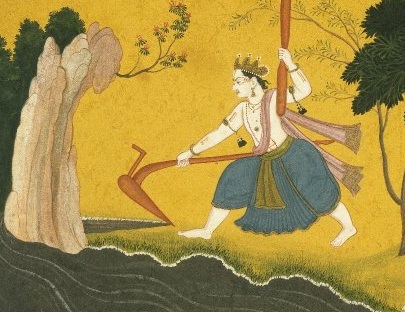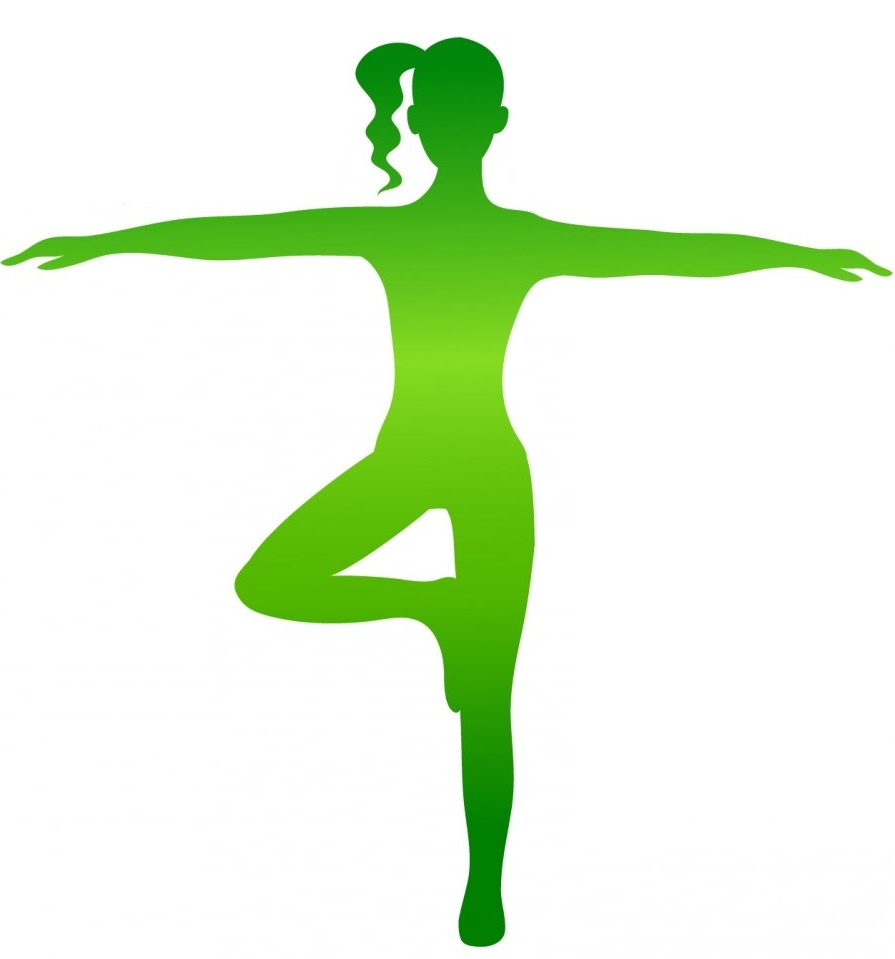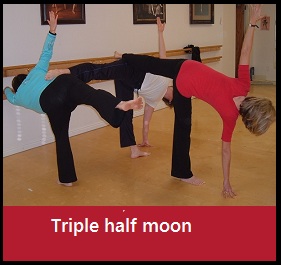From Hindu mythology the plough, or hala is carried and used by Krishna’s big brother, Balaram. His name is sometimes called Haladhara meaning the plough-carrier.
Once upon a time, Duryodhana imprisoned Krishna’s son Samba in Hastinapur. The family patriarch, King Ugrasena, called for retaliation. Seeing the family preparing for a fight, Balarama pacified them in order to avoid conflict between the dynasties. Balarama went to Hastinapur and demanded Samba’s release. When Duryodhana refused, Balarama took his plough and started to drag the city into the Yamuna River. To save the city Duryodhana released Samba.

A plough is used to break up hard unyielding ground, to till up the soil so new seeds can feel free to grow. Nutrients are ploughed to the surface where the new plants can use them. A plough is also used to break up and bury the old growth of a field so it can be returned to the earth and become new soil in the next season.
Let’s plough up all the benefits and risks of Halasana and I will explain why we at Rexburg Yoga not regularly use or teach Shoulderstand or Halasana, Plough pose. Let’s break up and till under our ego need and its attachment to achieving any certain asana.
Benefits of halasana:
Calms the brain
Stimulates the abdominal organs and the thyroid gland
Stretches the shoulders and spine
Helps relieve the symptoms of menopause
Reduces stress and fatigue
Risks of halasana:
Overstretching of the tissues in the neck, shoulders, and back. This overstretching can be minor or can cause sharp pain in the tissues and subsequent painful and limited range of motion for days or weeks.
Too much pressure on cervical spine
Both Shoulderstand and Plough are not beginner poses and although they both have benefits, there are other postures that also provide these benefits, so its not essential to practices these postures. It is recommended that before practicing Plough, a student should be very comfortable in holding a properly aligned Shoulderstand for 5 minutes. In a class setting with many beginners this is not possible or advisable.
Rexburg Yoga teachers have been evaluated and endorsed by several area medical professionals and our standard as part of that endorsement is that we teach in a moderate and safe way. The full Shoulderstand and Plough would be moving out of that range of safety so we choose to not practice these poses very often. However, we don’t want to ignore them altogether so we will discuss these limitations in class and then practice some alternatives that are safe, moderate and beneficial to all. Our commitment is to safety first; ahimsa, non-harming.
Things to remember for any version of Shoulderstand and Plough: Do not turn your head from side to side. Keep the base of the neck padded with extra blankets or hide the base of the neck by pulling the shoulder blades together and away from the neck. Move in and out of even modified version with mindfulness, no jerky quick movements. Come out if you feel pressure in face, head, or neck area. These are two postures that if they seem unsafe and you are uncomfortable trying them, don’t. Just do a modified or supported bridge pose, or reclined with legs in air and sacrum on a block.
If there is a student who is attached to learning and practicing this posture, our advice is to have a regular home practice for many months first. Read and learn the techniques of Shoulderstand then schedule some one on one time with Shelly or Leslie so we can work individually with you and help you practice Shoulderstand and Plough properly for your individual body structure.



